The vibrant blues of a peacock’s feathers, the striking azure of a blue jay, and the deep indigo of certain tropical fish captivate our imagination. When we envision dinosaurs, our mental images are often influenced by popular media, where these prehistoric creatures appear in various colors, including shades of blue. But were any dinosaurs blue? This question has sparked considerable debate among paleontologists and color scientists. Determining the actual colors of extinct animals that disappeared millions of years ago presents unique scientific challenges, yet recent technological advances have provided surprising insights. As we examine the evidence, we’ll explore what science can tell us about dinosaur coloration and whether any dinosaurs truly sported blue hues during their reign on Earth.
The Challenge of Determining Dinosaur Colors
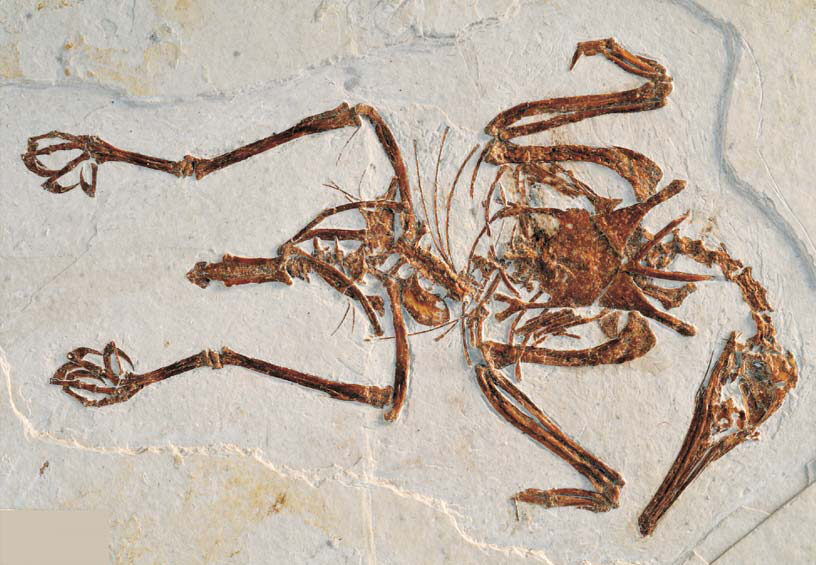
Unlike bones and teeth, color pigments rarely survive the fossilization process. This fundamental limitation has historically made it impossible to determine with certainty what colors dinosaurs displayed. For over a century after the first dinosaur discoveries, paleontologists could only speculate about coloration based on modern animal analogies. The soft tissues where color-producing cells would have been located typically decompose long before fossilization occurs. Even in exceptionally preserved specimens, the chemical compounds that once produced vibrant colors have usually broken down over millions of years. This preservation gap created a significant blind spot in our understanding of dinosaur appearance, leaving artists and scientists to make educated guesses based on evolutionary relationships and ecological considerations.
The Science of Animal Coloration

To understand whether dinosaurs could have been blue, we must first understand how blue coloration works in modern animals. Unlike many other colors that come from pigments, blue is often a structural color, created when light interacts with specialized microscopic structures in feathers, scales, or skin. These nanostructures scatter light in ways that emphasize blue wavelengths while absorbing others. In birds, for instance, blue feathers contain tiny air pockets and melanin granules arranged in precise patterns that reflect blue light. This structural coloration differs fundamentally from pigment-based colors like reds and yellows, which come from chemical compounds called carotenoids or melanins. The distinction matters greatly for paleontologists because structural colors depend on delicate arrangements that rarely survive fossilization, making blue particularly difficult to detect in the fossil record.
Revolutionary Fossil Analysis Techniques

In the past two decades, revolutionary techniques have emerged that allow scientists to detect fossilized melanosomes – the cellular structures that once contained melanin pigments. Using powerful electron microscopes and sophisticated chemical analysis methods like synchrotron X-ray fluorescence, researchers can now identify the shapes, sizes, and arrangements of these microscopic structures. The breakthrough came in 2010 when scientists analyzed the 150-million-year-old feathers of Archaeopteryx, finding preserved melanosomes that indicated this early bird-like dinosaur had black feathers. This discovery opened the door to analyzing other well-preserved fossils for color evidence. Techniques, including Raman spectroscopy, which uses laser light to identify molecular structures, have further expanded our ability to detect ancient color compounds. These methods have transformed paleontology from educated guesswork about coloration to evidence-based reconstructions.
The First Colorful Dinosaur Discoveries

The first scientifically confirmed colorful dinosaur was Sinosauropteryx, a small theropod from China whose fossilized feathers revealed a pattern of rusty-orange and white striped tail bands. This groundbreaking 2010 study used melanosome analysis to identify actual coloration rather than speculative artistic reconstructions. Shortly afterward, scientists determined that Anchiornis, a small four-winged dinosaur, displayed a complex pattern of black, white, and reddish-brown feathers. These discoveries sent shockwaves through the paleontological community, confirming that dinosaurs weren’t the uniformly drab, reptilian-colored creatures often depicted in older illustrations. The research team, led by scientists from the University of Bristol and the Institute of Vertebrate Paleontology in Beijing, had developed a color key based on melanosome shapes and arrangements in modern birds that allowed them to identify specific colors in these ancient creatures. However, notably absent from these first color discoveries was any evidence of blue.
The Unique Challenge of Finding Blue Dinosaurs
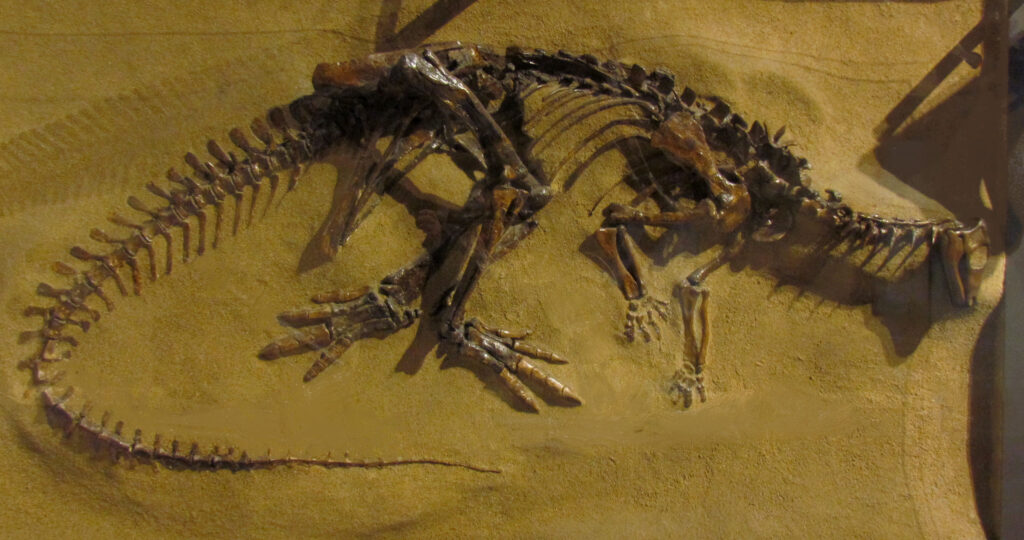
Blue presents a particular challenge for paleontologists seeking to identify dinosaur colors. As a structural color, blue depends on precisely arranged nanostructures rather than simple pigments. These delicate arrangements are especially vulnerable to destruction during the fossilization process, as pressure and mineralization typically collapse or alter such structures. Even if a dinosaur were vividly blue in life, that information would likely be lost over millions of years. Additionally, the melanosomes that create structural blue colors in combination with these nanostructures might appear identical to those that create black or gray colors when examined in fossils. Without the intact nanostructures, scientists examining fossilized melanosomes might misinterpret a once-blue feature as having been black or dark brown. This preservation bias means that blue dinosaurs might have existed but remain undetectable using current technologies.
Evidence from Dinosaurs’ Living Descendants

Birds, as the direct descendants of theropod dinosaurs, provide valuable insights into possible dinosaur coloration. Modern birds display spectacular blue coloration in many species, from bluebirds to blue jays to peacocks. The genetic capacity to produce structural blue coloration exists within the dinosaur family tree. Cassowaries, among the most dinosaur-like of modern birds, sport vibrant blue facial skin, suggesting this capability evolved relatively early. Crocodilians, the other living group of archosaurs closely related to dinosaurs, generally lack blue coloration, which might indicate blue structural colors evolved somewhere along the dinosaur-bird lineage. Examining where in the evolutionary timeline the capacity for blue structural coloration appeared could help paleontologists determine which dinosaur groups might have displayed blue features. The widespread presence of blue in modern birds strongly suggests that at least some of their dinosaur ancestors possessed the genetic toolkit for creating blue coloration.
The Case of Microraptor’s Iridescent Plumage

One of the most tantalizing discoveries related to dinosaur coloration came from Microraptor, a small four-winged dinosaur from the Early Cretaceous of China. In 2012, researchers analyzing exceptionally preserved fossils of this crow-sized predator found evidence of iridescent black feathers that would have shimmered with a glossy, rainbow-like quality in sunlight. While not blue specifically, this discovery demonstrated that some dinosaurs possessed sophisticated structural coloration that created visual effects beyond simple pigmentation. The researchers found that Microraptor’s melanosomes resembled those in modern iridescent black birds, suggesting its feathers would have displayed shifting colors as light struck them from different angles. This iridescence represents a stepping stone toward understanding how structural colors, including blue, might have appeared in dinosaurs. Microraptor’s shimmering plumage hints at a world of dinosaur coloration far more complex than previously imagined.
Caihong juji: The Rainbow Dinosaur
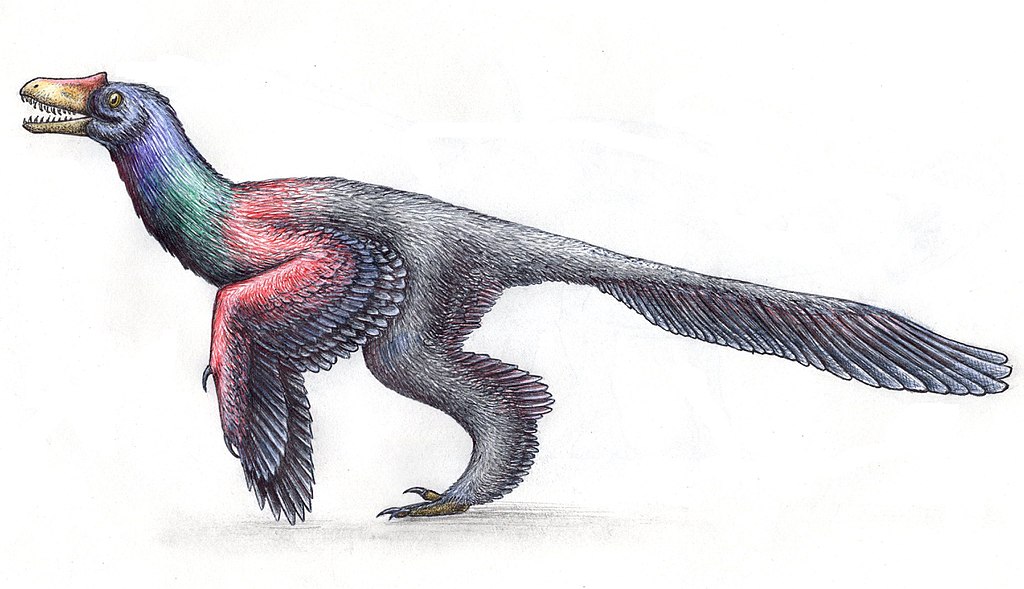
The closest science has come to identifying a blue dinosaur emerged in 2018 with the description of Caihong juji, a small, bird-like dinosaur from China whose name translates to “rainbow with a big crest.” Researchers found that the melanosomes in its head and neck feathers had a unique platelet-like shape similar to those that produce iridescent structural colors in modern hummingbirds. These structures suggest Caihong’s head feathers might have shimmered with rainbow-like colors that could have included blue iridescence. While not conclusively proving the dinosaur was blue, this discovery demonstrated that the necessary cellular structures for creating blue structural colors existed in dinosaurs. The fossilized melanosomes indicate Caihong sported a dramatic appearance with multiple structural colors across its plumage. This finding represents our best evidence to date that at least some dinosaurs might have displayed blue coloration as part of their iridescent visual displays.
Blue in the Broader Context of Dinosaur Coloration
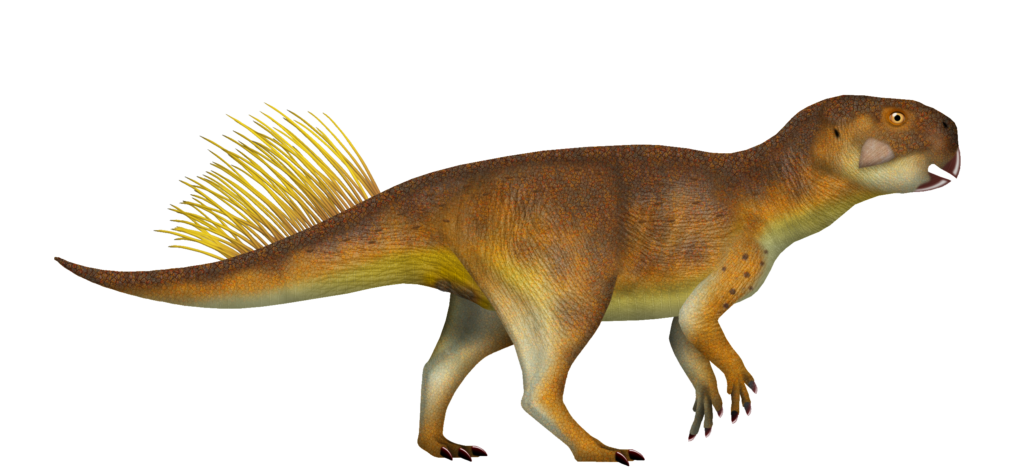
Current evidence suggests dinosaurs displayed a wide range of colors, primarily blacks, browns, whites, and rusty reds – colors produced by melanin pigments most likely to survive fossilization. Researchers have identified these colors in several species, including Psittacosaurus, Anchiornis, and Sinosauropteryx. Some dinosaurs also displayed patterns like countershading (darker upper surfaces, lighter undersides), camouflage stripes, and distinctive facial markings. The absence of confirmed blue dinosaurs likely reflects preservation bias rather than an actual absence of blue in the dinosaur world. Given the diversity of dinosaurs and their evolutionary relationship to colorful modern birds, it seems highly probable that some species displayed blue coloration, particularly among feathered dinosaurs closely related to birds. The sophisticated coloration strategies seen in confirmed cases suggest dinosaurs used color for many of the same purposes modern animals do: camouflage, species recognition, and mate attraction.
The Function of Blue in Modern Animals

Understanding why modern animals display blue coloration helps paleontologists hypothesize which dinosaurs might have sported blue features. In birds, blue often serves as a sexual signal, with males displaying brilliant blue plumage to attract mates, as seen in peacocks and blue birds of paradise. Blue can also function in species recognition, helping animals quickly identify members of their kind. Some animals use blue for camouflage, particularly in aquatic or forest canopy environments where blue helps them blend with water or sky. Blue facial skin in animals like mandrills and cassowaries serves as a status signal, becoming more vibrant when the animal is in peak health or dominant social position. Given these functions, dinosaurs most likely to have displayed blue would include species engaged in complex social and mating behaviors, particularly those with feathers or display structures. Territorial or socially complex dinosaurs that engaged in visual displays would be prime candidates for blue coloration.
Debunking Common Misconceptions About Dinosaur Colors

Popular culture has perpetuated several misconceptions about dinosaur coloration that need addressing. One common myth suggests all dinosaurs were drab green or brown like modern reptiles, an assumption now thoroughly disproven by fossil evidence. Another misconception holds that scientists can never know what colors dinosaurs were, when in fact specific colors have been scientifically confirmed in multiple species. Some enthusiasts mistakenly believe that artistic depictions of blue dinosaurs in movies and illustrations are based on scientific evidence, when most are creative speculations. Many people incorrectly assume that dinosaur skin resembled that of modern lizards or crocodiles, when many dinosaurs were feathered and likely displayed bird-like coloration patterns. Perhaps most relevantly, there’s a misconception that the absence of evidence for blue dinosaurs means dinosaurs weren’t blue, when in reality, the structural nature of blue coloration makes it particularly unlikely to be preserved in fossils.
Future Research Directions
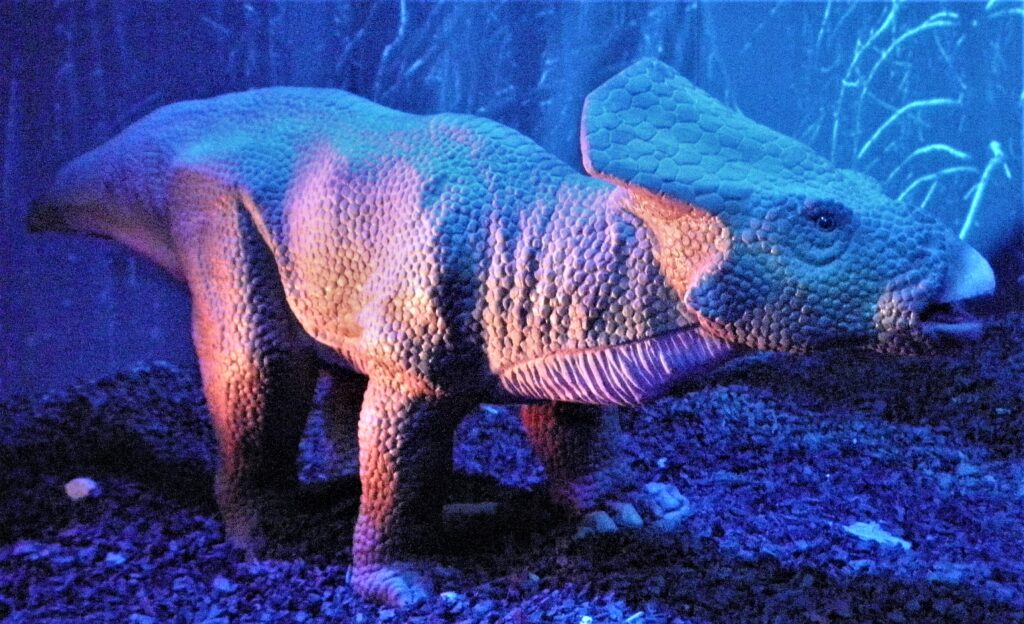
The search for blue dinosaurs continues as technology advances and new specimens are discovered. Several promising research directions may eventually reveal more about dinosaur coloration, including blue. New fossil sites with exceptional preservation conditions, particularly those that preserve soft tissues at the molecular level, could potentially reveal structural color evidence. Advanced imaging techniques like scanning electron microscopy with higher resolution might detect previously unobservable nanostructures that create structural colors. Comparative genomics studying the genetic basis for blue coloration in modern birds could identify when these genes evolved and which dinosaur groups likely possessed them. Computer modeling of dinosaur visual systems and their environments might reveal which species would have benefited from blue coloration for camouflage or display. As these methods develop, paleontologists remain hopeful that more concrete evidence of blue dinosaurs may eventually emerge from the fossil record.
Conclusion: The Plausibility of Blue Dinosaurs
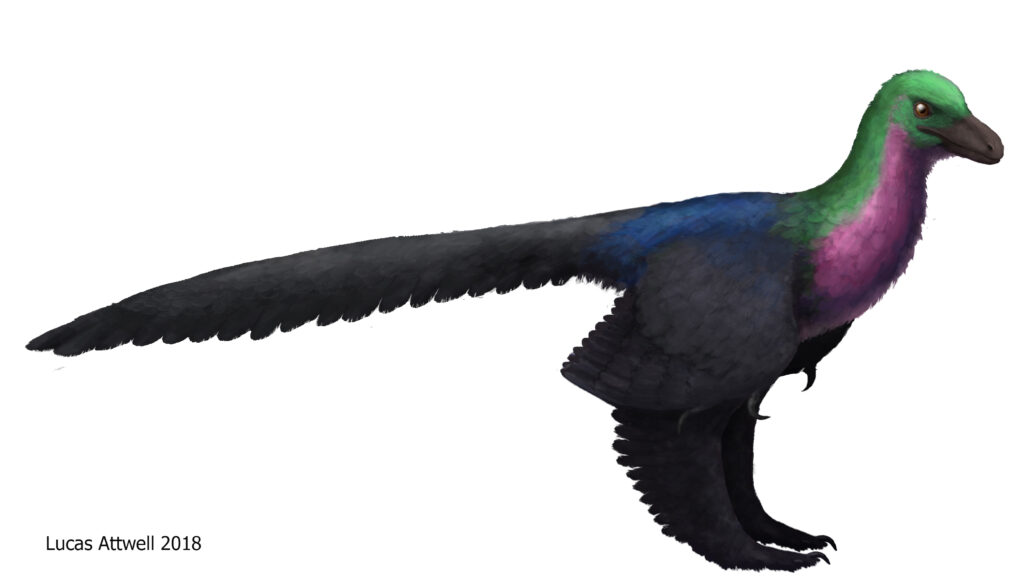
While no dinosaur has been conclusively proven to display blue coloration, the evidence strongly suggests some likely did. The prevalence of blue in modern birds, the direct descendants of theropod dinosaurs, indicates that the genetic capability for blue structural coloration existed within the dinosaur lineage. Discoveries like Caihong juji with its iridescent feathers demonstrate that at least some dinosaurs possessed the necessary cellular structures to create structural colors similar to those that produce blue in modern birds. The absence of confirmed blue dinosaurs likely reflects the poor preservation potential of structural colors rather than their absence in living dinosaurs. As our understanding of dinosaur coloration continues to evolve through technological innovation and new fossil discoveries, the scientific consensus increasingly supports the view that the dinosaur world was far more colorful than once believed – and that vivid blues were likely part of that prehistoric palette, even if direct evidence remains elusive.




